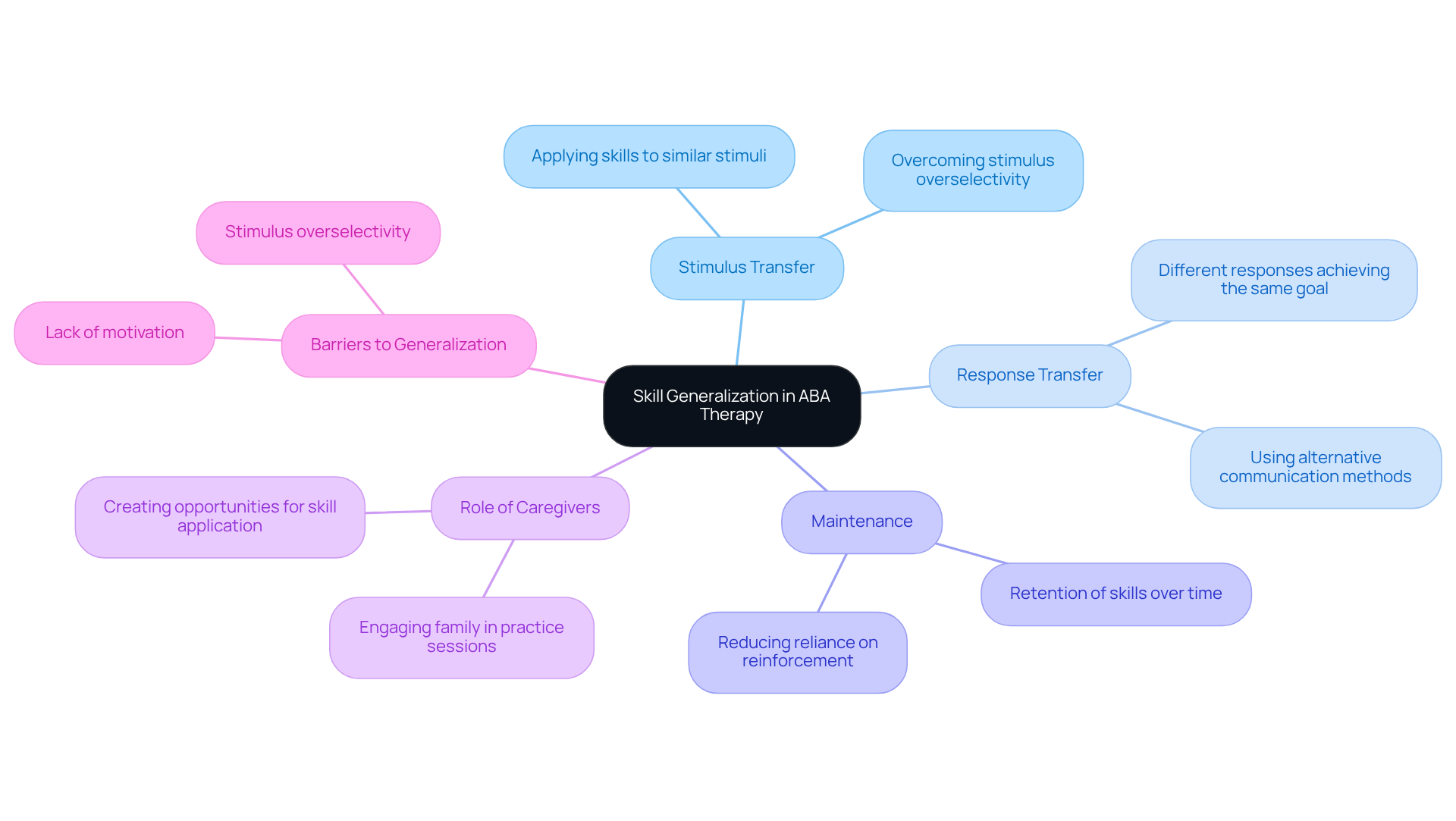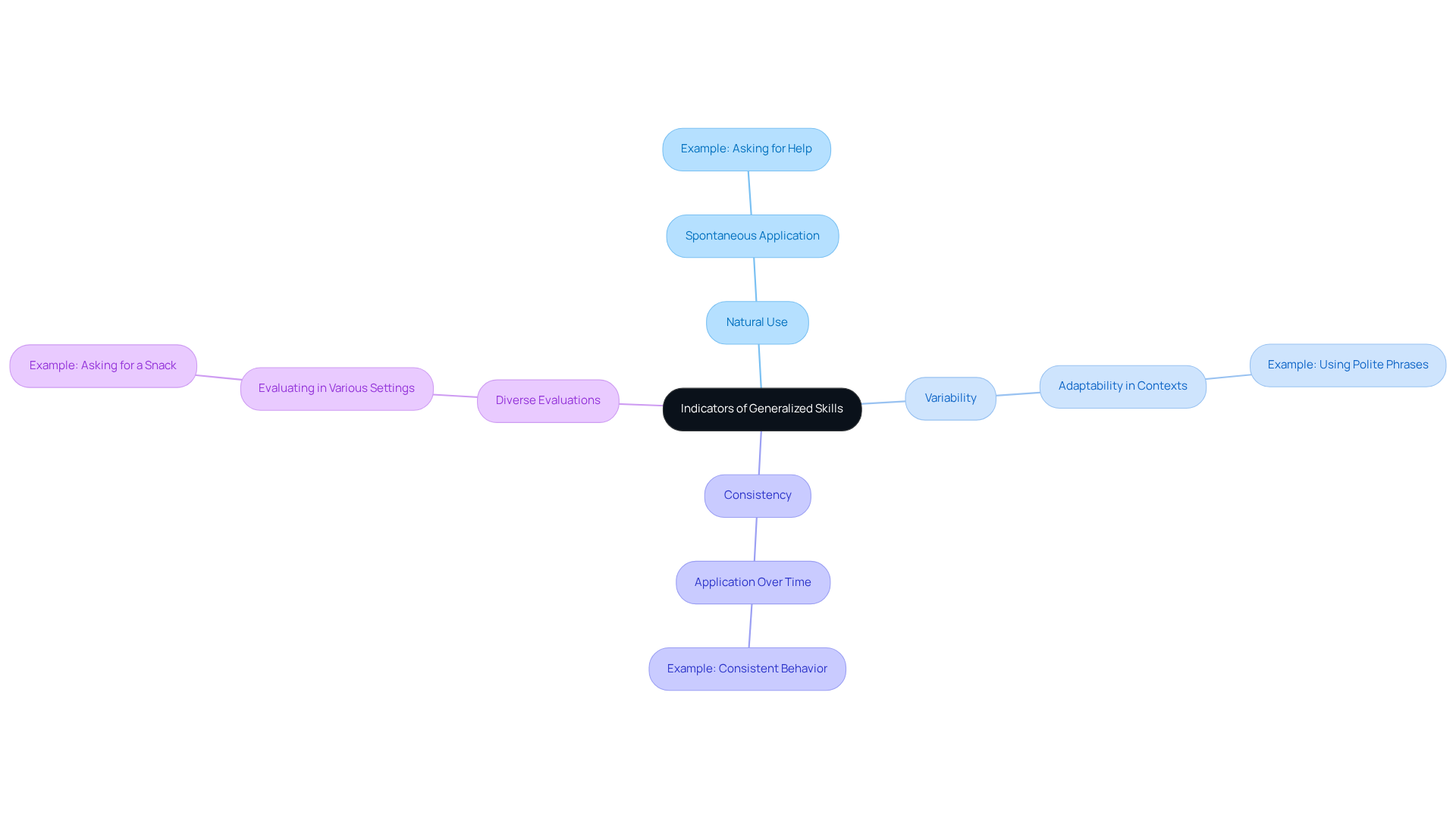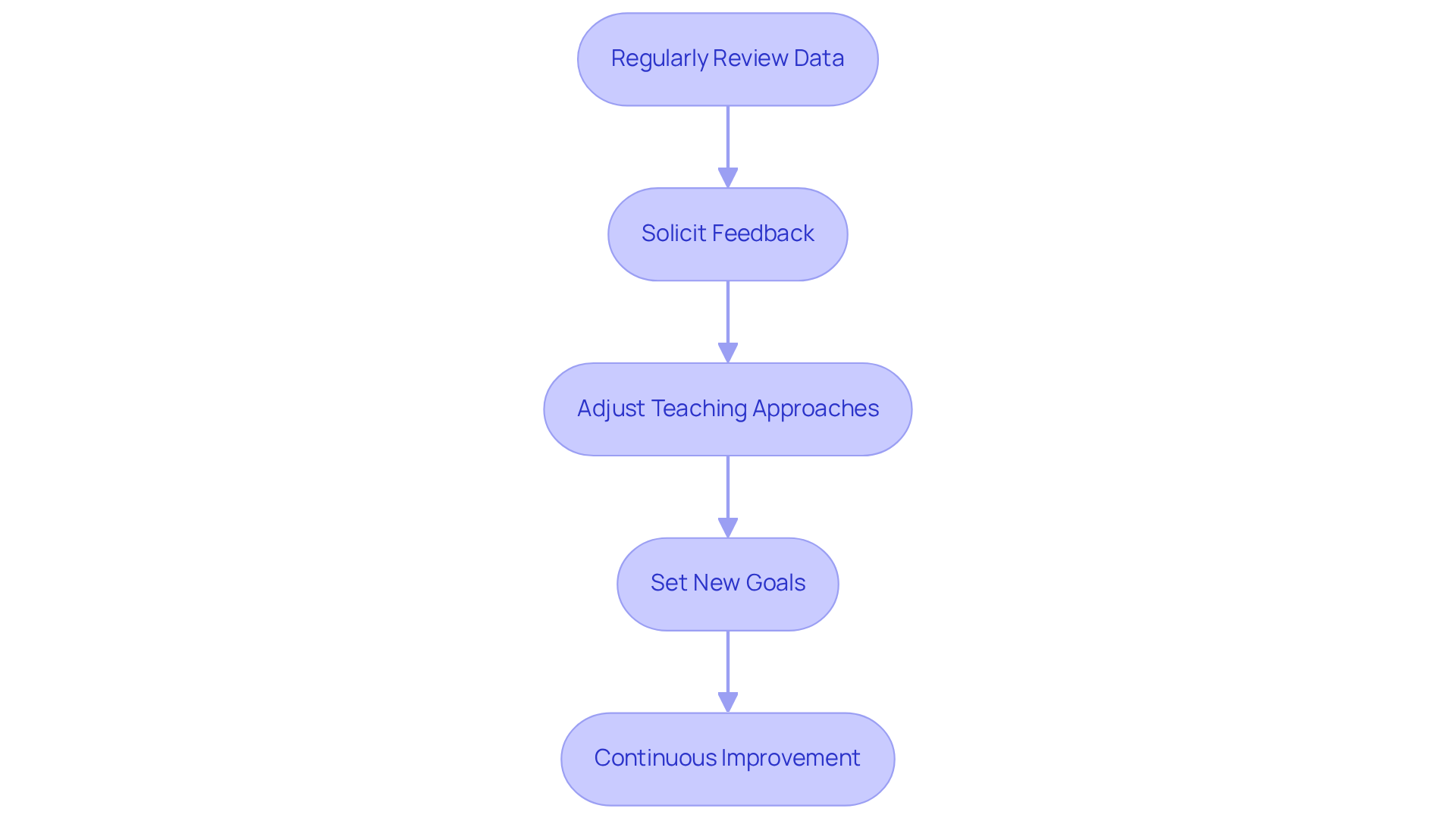October 18, 2025

To determine if a skill has been generalized, key indicators include:
Consider how often you observe these indicators in practice. The article outlines effective strategies such as Natural Environment Teaching and collaboration with caregivers that facilitate the assessment of skill generalization. It emphasizes the importance of observing skills in real-world situations. This observation ensures that skills are effectively applied beyond the initial learning environments, prompting a deeper consideration of your current assessment methods.
Understanding the ability to transfer learned skills across various contexts is crucial, particularly in Applied Behavior Analysis (ABA). The ultimate goal is to ensure that skills acquired in structured environments effectively translate into everyday life.
This article delves into the key indicators of skill generalization, offering practical strategies for assessing and enhancing this vital process.
What happens when the skills that should be generalized remain confined to the therapy room? Exploring this challenge reveals the complexities involved in skill transfer and highlights the transformative potential of targeted interventions that engage caregivers and real-world scenarios.
Understanding the capacity of an individual to apply acquired skills or actions across diverse settings beyond the initial learning context brings up the question of how would you know a skill was generalized. In Applied Behavior Analysis (ABA), this concept holds significant importance; it guarantees that skills cultivated in structured environments, such as therapy sessions, are observable in everyday situations, including home life and community interactions, prompting the inquiry of how would you know a skill was generalized.
Three primary categories of broad application in ABA exist:
For example, if a child learns to greet their therapist appropriately, they should also be able to utilize that greeting with peers or family members. Nevertheless, obstacles such as stimulus overselectivity and lack of motivation can impede this process. Therefore, practitioners must prioritize understanding how would you know a skill was generalized and facilitating the transfer of skills, which involves actively engaging caregivers and family members in the learning journey.
This collaborative approach is vital for fostering independence and enhancing the quality of life for individuals with Autism Spectrum Disorder (ASD). By incorporating acquired skills into daily practices, we further solidify generalization, ensuring that learned behaviors transition effectively into practical applications.

To determine if a skill has been generalized, practitioners should look for specific indicators:
Natural Use: The individual utilizes the ability spontaneously in daily circumstances without cues. For instance, how would you know a skill was generalized if a child who learned to ask for help does so when needed across different environments?
Variability: The student demonstrates adaptability in applying the technique across various contexts, such as using polite phrases in diverse social settings.
Consistency: The ability is applied consistently over time and across various individuals and environments, indicating that the learner has internalized the behavior.
Conducting evaluations in diverse settings can help determine how would you know a skill was generalized, yielding solid proof of transfer. For instance, if a child can ask for a snack during therapy and also does it at home, this shows successful transfer of skills.

To effectively assess skill generalization in real-world settings, practitioners can utilize several key strategies:
Natural Environment Teaching (NET): This method incorporates instructional strategies within the individual's natural surroundings, encouraging the use of abilities in pertinent situations. For instance, practicing social greetings during community outings enables participants to engage in genuine interactions, thereby strengthening their abilities in real-life scenarios. Specialists highlight that NET not only improves learning acquisition but also promotes generalization across various environments, rendering it an essential element of ABA therapy.
Role-Playing: Role-playing scenarios replicate real-life situations, offering participants opportunities to practice generalized abilities. This method prepares them for actual interactions by creating a safe space to rehearse and refine their responses, which raises the question of how would you know a skill was generalized. Research suggests that role-playing can greatly enhance the application of abilities to real-life situations, raising the question of how would you know a skill was generalized, as studies demonstrate a notable rise in successful interactions after role-play activities.
Data Collection: Regular data collection is crucial for monitoring the learner's performance across various settings. Practitioners should monitor instances of ability use, document the context in which these abilities are applied, and identify any obstacles that may hinder understanding of how would you know a skill was generalized. This data-driven method facilitates targeted interventions to improve ability transfer. Emphasizing proper data analysis procedures and effect size calculations is essential, as these practices can provide insights into the effectiveness of interventions and inform future strategies.
Collaboration with Caregivers: Engaging parents and caregivers in the assessment process is vital. Their insights into the learner's behavior outside of therapy sessions can offer a more comprehensive understanding of ability application. Furthermore, caregivers can strengthen abilities at home, establishing a stable learning atmosphere that encourages transfer. Engaging caregivers not only improves the learning experience but also guarantees that abilities are practiced consistently across various settings.

To foster continuous improvement in skill generalization, practitioners must take decisive action:

Understanding whether a skill has been generalized is crucial for ensuring that individuals can apply what they have learned in various real-life contexts. The significance of skill generalization is particularly pronounced in the realm of Applied Behavior Analysis (ABA), where it is essential for promoting independence among individuals with Autism Spectrum Disorder (ASD). Recognizing the indicators of generalized skills and implementing effective assessment strategies allows practitioners to confirm that acquired skills are not confined to a single environment but are adaptable and functional across different settings.
Key insights include the identification of specific indicators such as:
These serve as benchmarks for determining skill generalization. The article emphasizes practical assessment strategies like:
All of which play a pivotal role in evaluating how well skills transfer to everyday situations. Engaging caregivers in this process enhances the learning experience and ensures that skills are practiced consistently outside of formal settings.
The journey of skill generalization is vital not only for the development of individuals with ASD but also for their overall quality of life. By actively monitoring, evaluating, and adjusting teaching strategies, practitioners can foster an environment where skills flourish in real-world applications. The call to action is clear: prioritize skill generalization to empower individuals, enrich their interactions, and ultimately promote their independence in everyday life.
What is skill generalization in the context of Applied Behavior Analysis (ABA)?
Skill generalization refers to the ability of an individual to apply acquired skills or actions across various settings beyond the initial learning environment, ensuring that skills learned in structured settings, like therapy sessions, are observable in everyday situations.
What are the three primary categories of skill generalization in ABA?
The three primary categories are: 1. Stimulus Transfer: Applying skills to different but similar stimuli. 2. Response Transfer: Using various responses to achieve the same goal. 3. Maintenance: Retaining skills over time without frequent reinforcement.
Can you provide an example of skill generalization?
An example of skill generalization is a child who learns to greet their therapist appropriately and is then able to use that same greeting with peers or family members.
What obstacles can impede skill generalization?
Obstacles such as stimulus overselectivity and lack of motivation can hinder the process of skill generalization.
Why is it important to engage caregivers and family members in the learning process?
Engaging caregivers and family members is vital for facilitating the transfer of skills and fostering independence, ultimately enhancing the quality of life for individuals with Autism Spectrum Disorder (ASD).
How can acquired skills be solidified into daily practices?
Incorporating acquired skills into daily practices helps to solidify generalization, ensuring that learned behaviors effectively transition into practical applications in everyday life.
Our expert recruitment strategies and AI-driven sourcing ensure that you receive top-notch candidates quickly, without compromising on quality. Whether you’re looking for BCBAs, Clinical Directors, or RBTs, we’ve got you covered.